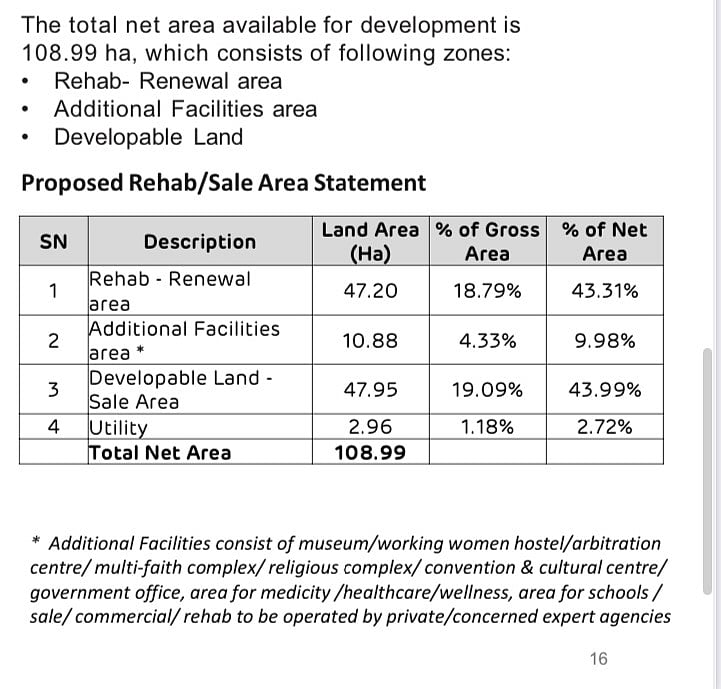Dharavi Redevelopment Project: Inside Dharavi’s Grand Makeover And Promise Of A Major Urban Overhaul In Mumbai
Mumbai: Just across the glitzy skyline of Mumbai’s Bandra Kurla Complex (BKC), where glass towers house global finance giants, a very different story is unfolding. Dharavi—the dense, bustling labyrinth often dubbed Asia’s largest slum—is at the cusp of a transformation unlike any before.
Spearheaded by the Dharavi Redevelopment Project Pvt Ltd (rebranded as Navbharat Mega Developers Pvt Ltd in December 2024), this colossal venture aims to reimagine life for over a million people crammed into 2.39 square kilometres.
The project is being executed under a joint venture partnership, with Adani Realty holding an 80% stake and the Government of Maharashtra retaining the remaining 20%. Adani emerged the highest bidder with a Rs 5,069 crore commitment, outpacing DLF’s Rs 2,025 crore offer.
With a projected redevelopment cost of over Rs 20,000 crore, the project promises not just new housing but a future rooted in dignity and basic rights—clean water, electricity, healthcare, and education.
But beyond numbers and blueprints lies a community built on resilience, informal economies, and decades of coexistence. Dharavi is not just a cluster of shanties—it’s a living, breathing microcosm of migrant histories, Tamilian roots, Muslim leather artisans, Gujarati potters, and now, younger generations who run travel agencies, tourist shops, and idli joints, blending tradition with urban enterprise.

The Blueprint for Change
SVR Srinivas (IAS) CEO of DRPL submitted the Dharavi redevelopment project blueprint (master plan) to the state government earlier this week that outlines an ambitious vision:
108.99 hectares of land dedicated to the overhaul. Nearly half—47.2 hectares—is set aside for rehabilitation and renewal housing. Another 47.95 hectares will be commercially developed to recoup project costs.
Facilities such as museums, wellness centres, schools, and religious complexes will take up 10.88 hectares. The remaining space will support utilities, roads, and open public areas, expanding the total redevelopment footprint to 251.24 hectares.
As of now, authorities have surveyed over 79,000 households, with documentation completed for about 57,000.
The data-collection process kicked off last year with laser mapping—known as LiDAR—of Dharavi’s tight lanes, followed by door-to-door surveys from Kamala Raman Nagar. The exercise aims to assign unique ID numbers to every structure—a crucial step in preventing future disputes.
To accommodate part of the construction, an additional 47.5 acres of railway land in Matunga has already been acquired, where early construction activities have begun.


Delays, Costs, and Growing Concerns:
While the promise of a new Dharavi sounds appealing on paper, reality presents a more complex picture. The rehabilitation component alone is pegged at a whopping Rs 95,790 crore. However, the construction segment—budgeted at Rs 23,800 crore—has already slipped by two years. As timelines stretch, concerns around cost escalations and administrative bottlenecks grow louder.
There’s also the question of industrial revival. About 20,000 small-scale industrial units are part of the plan, vital for preserving Dharavi’s economy. These will be developed in clusters, though zoning details remain under wraps. The success of this component is tied directly to the city’s ability to improve accessibility and ease traffic bottlenecks.
Bringing Dharavi Closer: Connectivity Reimagined
In a city where traffic defines daily life, improving Dharavi’s connectivity is key to its successful integration with the rest of Mumbai. Authorities have proposed new entry points, including multiple underpasses below the Central and Harbour lines and new links to arterial roads such as Senapati Bapat Marg and the BKC-Chunabhatti Link Road.
These efforts, officials say, are designed with a “15-minute neighbourhood” model in mind—ensuring every household has access to key services like schools, clinics, and community centres within a walkable distance.

Land Outside Dharavi: The Search for Space:
The redevelopment also hinges on identifying and securing alternative land parcels for resettlement and infrastructure. Of the 541.2 acres earmarked for this purpose, only 63.51 acres—around 12%—have been officially handed over. This includes 21 acres from the Agriculture and Dairy Department (6.7 km from Dharavi) and 42.51 acres from Jamasp Salt Pan in Mulund (23 km away).
Other identified plots—in Deonar, Aksa, Malvani, Arthur and Jenkins—remain to be transferred. These are critical for relocation and ensuring Dharavi’s makeover doesn’t come at the cost of community displacement.
On-Ground Resistance and the Road Ahead
Despite extensive planning, the project has met resistance on the ground, particularly in key pockets like the 13 Compound, Kumbhar Wada, and private slum-encumbered lands. Residents have been wary of displacement, bureaucratic hurdles, and unclear entitlements.
For the redevelopment to succeed, it must overcome these trust deficits. Ensuring transparency, consistent communication, and participatory planning will be crucial.
news